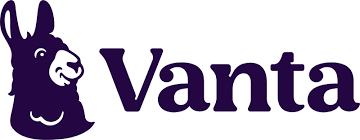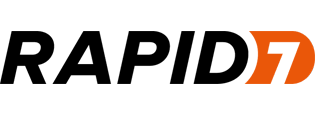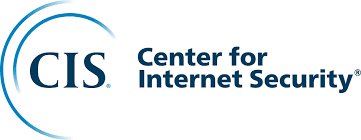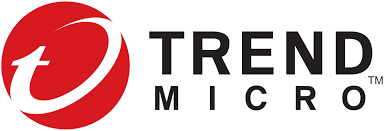Infrastructure compliance doesn’t sound glamorous, but it’s one of those things you really notice only when it goes wrong. Data leaks, failed audits, and non-compliance fines can bring even the most innovative company to a halt. That’s why more organizations are turning to specialized tools that keep infrastructure security, governance, and documentation in order without adding unnecessary friction.
These tools act as a safety net and a time saver at once. They automate compliance checks, track configuration drift, flag vulnerabilities, and map everything neatly against frameworks like ISO 27001, SOC 2, or HIPAA. In this article, we’ll look at the leading companies building smarter infrastructure compliance tools, the ones making sure modern cloud systems stay compliant, resilient, and easy to audit.

1. FlyPix AI
At FlyPix AI, we like to think of compliance as something that shouldn’t slow teams down. A lot of companies struggle to keep their infrastructure fully aligned with regulations because, let’s be honest, it’s usually a mess of reports, manual reviews, and “we’ll fix that later” moments. What we do is make that process a bit smarter, turning compliance and infrastructure monitoring into something visual, automated, and actually useful. With AI doing most of the heavy lifting, teams can focus on fixing what matters instead of trying to find it.
We’ve built FlyPix to make sense of complex systems without making your life harder. You can map out infrastructure, detect anomalies, and spot compliance issues in real time. It’s not about adding another dashboard no one checks, it’s about giving teams a way to see what’s really happening and act on it fast. Whether you’re working in cloud, on-prem, or hybrid setups, our goal is to make compliance less of a chore and more of an everyday part of staying secure and efficient.
Key Highlights:
- AI-powered platform for monitoring and analyzing infrastructure
- Real-time visibility into compliance status and system performance
- Automated anomaly detection for faster issue resolution
- Works across cloud, hybrid, and on-prem environments
- Visual insights for faster, data-backed decision-making
Who it’s best for:
- Teams tired of manual compliance tracking and messy reporting
- IT and security teams managing complex infrastructure setups
- Companies that want visual, AI-driven insights into their systems
- Organizations looking to simplify infrastructure monitoring
- Businesses aiming for ongoing compliance instead of once-a-year audits
Contact and Social Media Information:
- Website: flypix.ai
- Email: info@flypix.ai
- LinkedIn: www.linkedin.com/company/flypix-ai
- Address: Robert-Bosch-Str. 7, 64293 Darmstadt, Germany
- Phone: +49 6151 2776497

2. Vanta
Vanta helps companies keep their security and compliance programs on track without losing their minds to spreadsheets or endless checklists. They built a platform that keeps tabs on things like SOC 2, ISO 27001, HIPAA, and GDPR so teams can automate the boring parts of compliance and focus on the actual work. Think of it as that quiet teammate who never forgets deadlines, keeps your docs organized, and reminds you when something starts to slip out of compliance.
What makes Vanta stand out is how it blends automation with real visibility. Instead of waiting for an annual audit scramble, you get continuous monitoring across your systems and tools. It connects directly with your cloud setup, project management apps, and employee systems to flag anything risky in real time. For teams juggling security, IT, and compliance responsibilities, it’s less about ticking boxes and more about staying ready all year round.
Key Highlights:
- Continuous monitoring for security and compliance
- Integrations with popular cloud and workplace tools
- Automated evidence collection for audits
- Support for frameworks like SOC 2, ISO 27001, HIPAA, and GDPR
- Real-time alerts for configuration or access issues
Who it’s best for:
- Companies preparing for or maintaining SOC 2, ISO, or HIPAA compliance
- Startups scaling their security operations without hiring large teams
- IT and security teams that want automated compliance tracking
- Businesses needing continuous audit readiness across multiple frameworks
- SaaS providers managing client data and needing verified security practices
Contact and Social Media Information:
- Website: www.vanta.com
- LinkedIn: www.linkedin.com/company/vanta-security
- Twitter: x.com/TrustVanta

3. Drata
Drata is one of those tools that steps in and quietly fixes a problem you didn’t realize was eating up half your week. They’ve built a platform that keeps your security and compliance work running in the background, so you’re not stuck chasing screenshots or updating spreadsheets before every audit. It connects with the tools you already use, checks your systems for gaps, and basically acts like the one team member who never forgets what’s due or what’s out of place.
What makes Drata easy to like is how low-maintenance it is. You plug it into your setup, and it keeps an eye on everything across frameworks like SOC 2, ISO 27001, HIPAA, and GDPR. When something drifts out of compliance, it tells you right away instead of three days before your audit. It’s not flashy, but it’s the kind of system that saves you from late-night panic sessions before an auditor meeting.
Key Highlights:
- Keeps compliance monitoring running automatically in the background
- Works with multiple frameworks like SOC 2, ISO 27001, HIPAA, and GDPR
- Connects to your cloud platforms and internal tools with minimal setup
- Sends real-time alerts when controls slip out of shape
- Helps you stay audit-ready year-round without the usual scramble
Who it’s best for:
- Teams juggling multiple compliance frameworks at once
- Security managers who’d rather automate the routine stuff
- Startups that need to stay compliant without hiring a full-time compliance officer
- Growing SaaS companies working toward enterprise-level certifications
- Anyone who’s done an audit once and vowed to never do it manually again
Contact and Social Media Information:
- Website: drata.com
- Email: getstarted@drata.com
- LinkedIn: www.linkedin.com/company/drata
- Twitter: x.com/dratahq

4. ComplianceCow
ComplianceCow feels like it was made by people who’ve actually dealt with the grind of compliance work. You know that endless juggling act between policies, spreadsheets, audits, and chasing down colleagues for evidence? They’ve built a platform that takes most of that pain off your plate. It pulls everything together in one spot so teams can manage their compliance programs without getting lost in a mess of documents or reminders.
What’s refreshing about ComplianceCow is how straightforward it is. There’s no fluff, no over-the-top promises, just tools that help you stay organized and ready for audits without losing your sanity. It keeps tabs on your progress, handles frameworks like ISO 27001 and SOC 2, and reminds you when something needs attention. It’s practical software made for real teams who just want compliance to be manageable, not miserable.
Key Highlights:
- All-in-one workspace for policies, audits, and training
- Automated reminders and task tracking for compliance activities
- Works with standards like ISO 27001, SOC 2, and GDPR
- Visual dashboards that actually make sense
- Designed for busy teams that want clarity, not chaos
Who it’s best for:
- Companies tired of messy spreadsheets and compliance confusion
- Teams handling multiple certifications or audits
- IT and security managers who need to stay on top of documentation
- Startups growing fast and trying to stay compliant as they scale
- Anyone who wants compliance to be a process, not a panic
Contact and Social Media Information:
- Website: www.compliancecow.com
- Email: info@compliancecow.com
- Phone: 650-996-2019
- Address: 1808 Kern Loop Fremont, CA 94539 United States
- LinkedIn: www.linkedin.com/company/compliancecow

5. Palo Alto Networks
Palo Alto Networks has been around long enough to see just about every version of a security headache there is. Their work centers on helping companies keep their infrastructure safe and compliant, especially in complex environments where one missed configuration can lead to a real mess. They focus on cloud security, automation, and compliance monitoring so teams can spot issues early and fix them before they turn into bigger problems.
Their platform ties together threat detection, access control, and continuous compliance in a way that doesn’t feel clunky. Whether it’s managing workloads across AWS, Azure, or Google Cloud, or mapping controls to frameworks like ISO, SOC 2, or NIST, Palo Alto Networks makes the whole process more manageable. It’s built for teams that want real visibility without sifting through endless dashboards or logs just to know if they’re in the clear.
Key Highlights:
- Continuous compliance monitoring across cloud environments
- Tools for detecting misconfigurations and security risks early
- Integration with major cloud platforms and compliance frameworks
- Automated reporting for audits and internal reviews
- Combines threat prevention with policy enforcement in one place
Who it’s best for:
- Cloud security teams managing multi-cloud or hybrid infrastructure
- IT departments dealing with ongoing compliance checks and audits
- Companies that want to catch issues before they escalate into incidents
- Enterprises standardizing on frameworks like SOC 2 or NIST
- Teams that prefer automation over manual compliance tracking
Contact and Social Media Information:
- Website: www.paloaltonetworks.com
- Phone: (866) 320-4788
- Address: 3000 Tannery Way Santa Clara, CA 95054
- LinkedIn: www.linkedin.com/company/palo-alto-networks
- Twitter: x.com/PaloAltoNtwks
- Facebook: www.facebook.com/PaloAltoNetworks

6. Wiz
Wiz is one of those tools people bring up when they talk about making cloud security a little less painful. They’ve built something that gives teams a full view of what’s happening across their cloud setup, not just surface-level stuff, but the details that actually matter when it comes to compliance and risk. Instead of bouncing between dashboards and trying to piece things together manually, Wiz connects the dots for you, showing where vulnerabilities or misconfigurations might cause trouble.
What makes Wiz feel different is how easy it is to get the bigger picture. It doesn’t drown you in noise or endless alerts. It shows you what’s important, helps you prioritize fixes, and keeps your compliance efforts from turning into a guessing game. Whether a company’s running on AWS, Azure, or Google Cloud, Wiz gives them a way to keep security and compliance in check without constantly firefighting.
Key Highlights:
- Unified visibility across multi-cloud environments
- Identifies misconfigurations, vulnerabilities, and compliance gaps
- Prioritizes real risks instead of flooding teams with alerts
- Integrates with popular cloud services and DevOps tools
- Helps maintain compliance with frameworks like SOC 2, ISO, and HIPAA
Who it’s best for:
- Cloud and DevOps teams juggling multiple platforms
- Security teams that need quick visibility into infrastructure risks
- Companies scaling fast and trying to stay compliant without losing speed
- IT teams looking for smarter, less noisy compliance monitoring
- Organizations running audits or certifications across several frameworks
Contact and Social Media Information:
- Website: www.wiz.io
- LinkedIn: www.linkedin.com/company/wizsecurity
- Twitter: x.com/wiz_io

7. Tenable
Tenable has been around the block when it comes to keeping infrastructure safe and compliant. They focus on finding the weak spots before they turn into real problems, which honestly saves a lot of stress later. Their platform helps teams see what’s going on across their networks, cloud systems, and even operational tech basically anywhere things can slip through the cracks. It’s not the kind of flashy tool that tries to do everything at once; it’s more like the steady friend that points out issues early so you can fix them quietly and move on.
What people like about Tenable is that it gives them a clear picture of their risk without turning it into an overwhelming data dump. It maps out vulnerabilities, tracks compliance with frameworks like ISO, NIST, and CIS, and helps you stay on top of security standards without needing to babysit the system. It’s built for the reality that most IT and security teams live in too much to monitor, not enough time and it cuts through the noise so you can actually take action where it matters.
Key Highlights:
- Identifies vulnerabilities across cloud, on-prem, and hybrid setups
- Helps maintain compliance with common security frameworks
- Simplifies vulnerability management with clear prioritization
- Tracks and reports risk posture over time
- Integrates with popular security and DevOps tools
Who it’s best for:
- Security and IT teams that need visibility without the clutter
- Companies managing large or mixed infrastructure environments
- Organizations working under multiple compliance frameworks
- Teams that prefer straightforward reporting and actionable insights
- Businesses focused on proactive risk management
Contact and Social Media Information:
- Website: www.tenable.com
- Phone: +1 (410) 872-0555
- Address: 6100 Merriweather Drive 12th Floor Columbia, MD 21044
- LinkedIn: www.linkedin.com/company/tenableinc
- Instagram: www.instagram.com/tenableofficial
- Twitter: x.com/tenablesecurity
- Facebook: www.facebook.com/Tenable.Inc

8. Qualys
Qualys is one of those names that’s been floating around the security space for years, quietly doing the heavy lifting most teams don’t brag about. They’ve built a platform that helps companies keep their infrastructure secure and compliant without having to babysit a dozen tools. It scans your systems, flags issues, and helps you stay aligned with whatever compliance frameworks you’re working under. Think of it as the reliable coworker who’s not flashy but always spots problems before they blow up.
What people like about Qualys is how it fits into existing workflows. You don’t need to reinvent your process or build something from scratch; it plugs right in, starts scanning, and keeps you updated on what’s vulnerable or misconfigured. Whether you’re working across data centers, cloud platforms, or hybrid setups, Qualys keeps an eye on everything and gives you the info you need to fix things fast, without drowning you in alerts. It’s the kind of tool that makes security and compliance feel manageable instead of chaotic.
Key Highlights:
- Continuous scanning for vulnerabilities across all environments
- Tracks compliance with major security frameworks and regulations
- Real-time visibility into asset configurations and risks
- Integrates with cloud platforms and on-prem systems
- Prioritizes fixes based on actual threat level
Who it’s best for:
- Security teams juggling multiple compliance standards
- IT managers overseeing both cloud and on-site infrastructure
- Companies that want to catch issues early without overcomplicating things
- Teams looking for visibility across hybrid or distributed systems
- Organizations that need to prove compliance without endless manual reports
Contact and Social Media Information:
- Website: www.qualys.com
- Email: info@qualys.com
- Phone: +16508016100
- Address: 919 E Hillsdale Blvd, 4th Floor Foster City, CA 94404 USA
- LinkedIn: www.linkedin.com/company/qualys
- Twitter: x.com/qualys
- Facebook: www.facebook.com/qualys
- Instagram: www.instagram.com/qualyscloud

9. Rapid7
Rapid7 feels like it actually understands how chaotic security work can get. Their tools are built for the real world, the kind where you’re juggling alerts, trying to keep systems patched, and dealing with compliance requirements that never stop changing. They bring everything together into one place, so instead of hopping between different tools, teams can actually see what’s happening across their infrastructure. It’s less about showing off dashboards and more about getting things fixed before they become major headaches.
What sets Rapid7 apart is how it focuses on the day-to-day realities of security. They combine vulnerability management, detection, and compliance tracking in a way that feels like it was made by people who’ve actually sat in those long incident response calls. You get visibility into what’s risky, what’s compliant, and what needs immediate attention without feeling buried in endless reports. It’s the kind of setup that helps teams breathe a little easier, even on those “everything’s on fire” days.
Key Highlights:
- Centralized visibility into vulnerabilities and threats
- Built-in tools for compliance monitoring and audit prep
- Integrates with cloud, on-prem, and hybrid systems
- Prioritizes risks so teams know what to fix first
- Automation options to streamline repetitive security tasks
Who it’s best for:
- Security teams managing multiple systems and frameworks
- IT departments needing clearer visibility across infrastructure
- Companies balancing compliance with ongoing risk management
- Organizations that want faster vulnerability detection and response
- Teams that prefer practical, hands-on security tools over theory-heavy ones
Contact and Social Media Information:
- Website: www.rapid7.com
- Email: sales@rapid7.com
- Phone: 866-772-7437
- Address: 120 Causeway Street Suite 400 Boston, MA 02114
- LinkedIn: www.linkedin.com/company/rapid7
- Twitter: x.com/Rapid7
- Instagram: www.instagram.com/rapid7
- Facebook: www.facebook.com/rapid7

10. Checkmarx
Checkmarx sits right in that space between security and development, the part everyone agrees is important but no one really wants to deal with at 6 p.m. on a Friday. They focus on helping teams build software that’s actually secure from the start instead of trying to patch things later. Their tools scan code, dependencies, and open-source components to catch vulnerabilities before they sneak into production. It’s not magic; it’s just smart automation that saves developers a ton of time and nerves.
What people tend to appreciate about Checkmarx is that it doesn’t feel like it was built by someone who’s never written code. It plugs into existing workflows without slowing anyone down and gives useful feedback instead of long technical rants. Whether teams are working in the cloud, hybrid setups, or local environments, Checkmarx helps them keep compliance in check and security tight without turning development into a checklist exercise. It’s practical, developer-friendly, and very much built for the real world.
Key Highlights:
- Scans application code and open-source dependencies for security flaws
- Helps teams catch vulnerabilities early in the development process
- Integrates with CI/CD pipelines and developer tools
- Supports multiple languages and frameworks
- Aligns code security with compliance requirements
Who it’s best for:
- Development teams that want to avoid post-release security fire drills
- Companies building software under strict compliance frameworks
- DevSecOps teams needing to automate code scanning and reporting
- Organizations juggling multiple programming languages and cloud setups
- IT leaders looking for a practical way to keep code secure without slowing down releases
Contact and Social Media Information:
- Website: checkmarx.com
- Email: checkmarx@pancomm.com
- Address: 140 E. Ridgewood avenue Suite 415, South Tower, Paramus, NJ 07652
- LinkedIn: www.linkedin.com/company/checkmarx
- Twitter: x.com/checkmarx
- Facebook: www.facebook.com/Checkmarx.Source.Code.Analysis

11. Center for Internet Security (CIS)
CIS is one of those platforms that doesn’t try to make security sound glamorous; they just quietly set the standards everyone else ends up following. They focus on practical ways to secure systems and keep infrastructure in line with proven benchmarks. If you’ve ever heard of CIS Controls or CIS Benchmarks, that’s their work. They basically give companies a roadmap for tightening up their systems and staying compliant without turning everything into a 300-page checklist.
What people like about CIS is that it’s not trying to sell you fear or fancy dashboards. Their approach is straight-up practical: here’s what’s broken, here’s how to fix it, and here’s how to make sure it stays fixed. They also help organizations, especially in government and critical infrastructure, coordinate around threats and share what’s actually happening in the real world. It’s more of a community vibe than a software company, which is probably why so many teams trust their frameworks as the baseline for getting security right.
Key Highlights:
- Creator of the widely used CIS Controls and CIS Benchmarks
- Focus on practical, actionable cybersecurity guidance
- Collaboration with public and private sectors for threat intelligence sharing
- Helps organizations align with compliance and security frameworks
- Offers tools for continuous configuration monitoring and improvement
Who it’s best for:
- IT teams building their security programs from the ground up
- Organizations that want clear, realistic compliance guidelines
- Public sector and critical infrastructure operators
- Companies using CIS Benchmarks as part of their audit or certification process
- Teams looking for structured but flexible ways to maintain security hygiene
Contact and Social Media Information:
- Website: www.cisecurity.org
- Phone: 518-266-3460
- Address: 31 Tech Valley Drive | East Greenbush, NY 12061
- LinkedIn: www.linkedin.com/company/the-center-for-internet-security
- Twitter:x.com/CISecurity
- Facebook: www.facebook.com/CenterforIntSec
- Instagram: www.instagram.com/cisecurity

12. Trend Micro
Trend Micro has been in the cybersecurity game for a long time, and you can tell they’ve learned a thing or two about what actually works. Their tools cover pretty much every layer of security from cloud workloads and endpoints to networks and containers but what’s nice is how they tie everything together in a way that makes sense. It’s not one of those setups where you need a full-time babysitter just to keep it running. They give companies visibility into what’s happening across their infrastructure and help them stay compliant with whatever regulations they’re dealing with.
What people appreciate about Trend Micro is that it doesn’t overcomplicate things. They’ve built their platform to spot risks early, manage vulnerabilities, and keep systems aligned with security standards without turning it into a full-blown project every week. Whether a company is migrating to the cloud, managing hybrid systems, or trying to pass an audit, Trend Micro helps them keep everything consistent and under control quietly doing the work in the background while teams get on with their day.
Key Highlights:
- Unified security across cloud, network, and endpoint systems
- Continuous compliance monitoring with clear visibility
- Automated threat detection and vulnerability management
- Supports hybrid and multi-cloud environments
- Simplifies alignment with frameworks like ISO, SOC, and NIST
Who it’s best for:
- Companies managing complex or hybrid cloud environments
- IT and security teams juggling compliance with daily operations
- Organizations looking for better visibility across systems
- Teams that want to catch vulnerabilities before they become major issues
- Businesses that prefer automation over manual security checks
Contact and Social Media Information:
- Website: www.trendmicro.com
- Email: salesinfo_dach@trendmicro.com
- Address: Wienerbergstrasse 11 Twin Tower B, 15. Stock 1100 Wien Austria
- LinkedIn: www.linkedin.com/company/trend-micro-europe
- Twitter: x.com/TrendMicro
- Instagram: www.instagram.com/trendmicro
- Facebook: www.facebook.com/TrendMicro

13. Chef
Chef is one of those tools that came out of the DevOps world and never really lost its practical, builder mindset. They focus on helping companies automate how infrastructure is configured, deployed, and kept compliant, basically making sure everything across your systems looks and behaves the way it’s supposed to. Instead of manually checking servers or rewriting scripts, Chef helps teams set rules once and have those rules applied everywhere, automatically. It’s like having a neat freak on your team who makes sure nothing drifts out of order.
What’s cool about Chef is that it doesn’t try to reinvent how teams work; it fits into whatever setup they already have. Developers can treat infrastructure like code, apply compliance policies the same way they push updates, and keep everything version-controlled. It’s the kind of approach that appeals to people who want less talk and more doing. Whether it’s the cloud, on-prem, or a mix of both, Chef helps teams keep things clean, compliant, and consistent without a lot of noise.
Key Highlights:
- Automates infrastructure setup and compliance management
- Uses code-based policies for repeatable, consistent configurations
- Works across cloud, on-prem, and hybrid environments
- Integrates easily with CI/CD pipelines and version control systems
- Provides visibility into policy drift and configuration status
Who it’s best for:
- DevOps teams managing complex or fast-changing environments
- IT teams that want to automate compliance instead of tracking it manually
- Companies with both legacy systems and modern cloud setups
- Teams looking to standardize configurations across multiple platforms
- Organizations using infrastructure-as-code workflows
Contact and Social Media Information:
- Website: www.chef.io
- Phone: +1-781-280-4000
- Address: 15 Wayside Rd, Suite 400 Burlington, MA 01803 USA
- LinkedIn: www.linkedin.com/company/chef-software
- Twitter: x.com/chef
- Instagram: www.instagram.com/chef_software
- Facebook: www.facebook.com/getchefdotcom

14. CrowdStrike
CrowdStrike is one of those platforms that seems to actually get how messy modern IT environments can be. They deal with security and compliance in a way that feels a bit more grounded, not all hype, just smart systems that keep track of what’s happening across your infrastructure. Their platform watches endpoints, cloud setups, and workloads in real time, which means teams can spot issues before they become a big deal. Instead of the old-school method of digging through logs or waiting for something to break, CrowdStrike gives you a running snapshot of what’s clean, what’s risky, and what needs fixing.
What people like about them is that their tools don’t feel like a pain to use. Everything runs in the background, feeding teams the insights they need without slowing down daily work. It’s basically a mix of smart detection, automation, and compliance tracking wrapped into one. Whether a company’s trying to stay aligned with standards like ISO or SOC 2, or just wants to make sure nothing weird is happening on their network, CrowdStrike makes it a lot easier to keep tabs without losing half a day to it.
Key Highlights:
- Real-time monitoring of endpoints, workloads, and cloud environments
- Automated detection and response to security incidents
- Continuous compliance tracking across multiple frameworks
- Integrations with popular DevOps and IT tools
- Threat intelligence that helps identify risks before they escalate
Who it’s best for:
- IT and security teams managing large, distributed systems
- Companies looking to simplify compliance tracking while boosting security
- Organizations dealing with frequent audits or certifications
- Teams that prefer proactive monitoring instead of post-incident cleanup
- Businesses wanting an all-in-one approach to visibility, compliance, and protection
Contact and Social Media Information:
- Website: www.crowdstrike.com
- Email: info@crowdstrike.com
- Phone: 18885128906
- LinkedIn: www.linkedin.com/company/crowdstrike
- Twitter: x.com/CrowdStrike
- Instagram: www.instagram.com/crowdstrike
Conclusion
Infrastructure compliance tools aren’t the flashiest part of tech, but they’re the backbone of keeping things running smoothly. The reality is, every company hits that point where manual tracking, spreadsheets, and last-minute audits just don’t cut it anymore. That’s where these tools come in not as magic fixes, but as reliable systems that help teams stay on top of security, consistency, and accountability without burning out.
The good thing is, there’s no shortage of smart options out there. Some focus on automation, others on visibility, and a few bring everything together with AI and integrations that actually make sense. The trick is finding what fits your setup and workflow, not just what looks good on paper. Because at the end of the day, compliance isn’t about ticking boxes, it’s about keeping your infrastructure steady enough so your team can focus on building, not firefighting.
